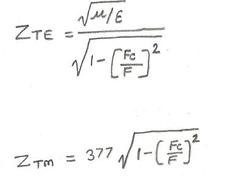
Circular Waveguide Mode Suppressors: Features and Applications
Explore circular waveguide mode suppressors, their function in eliminating unwanted modes in RF systems, benefits, and industrial applications for efficient signal transmission.
Showing 25 posts (Page 1 of 2)
Advertisement

Explore circular waveguide mode suppressors, their function in eliminating unwanted modes in RF systems, benefits, and industrial applications for efficient signal transmission.

Explore circular waveguide polarizers and its types, selection criteria and leading manufacturers for optimal RF system performance.

Coaxial line to waveguide transitions convert TEM mode to TE mode using E-plane (probe) or in-line coupling for impedance matching and high power applications.

Explore the key differences between Dielectric Filled Waveguides (DFW) and Substrate Integrated Waveguides (SIW), including construction and mode of operation.

Learn about dominant modes in rectangular (TE10) and circular (TE11) waveguides, including characteristics, cutoff frequencies, and applications.

Explore the fundamentals of Finline technology, including its benefits such as low dispersion and broad bandwidth, as well as its drawbacks like complex assembly.

Learn about flexible waveguides: their types (twistable, non-twistable, seamless), benefits in connecting misaligned parts and handling movement, and key applications.

Explore the pros and cons of flexible waveguides, including flexibility, insertion loss, and applications in RF transmission systems.
Learn about microwave waveguide covers, their function in microwave ovens, signs of wear, and the importance of replacement. Find information on waveguide basics and manufacturers.

Explore the differences between rectangular and circular waveguides, focusing on structure, mode propagation, frequency, and applications for informed decision-making.

Explore ridge waveguides: structure, advantages (impedance matching, bandwidth increase), and disadvantages (lower power handling) compared to rectangular waveguides.

Understand SIW (Substrate Integrated Waveguides) mode, its structure, and the dominant TE10 mode. Explore cutoff frequency calculations and related waveguide concepts.

Explore the pros and cons of Substrate Integrated Waveguide (SIW) technology, including power handling, losses, cost, and design considerations.

Explore the key differences between Transverse Electric (TE) and Transverse Magnetic (TM) waves in hollow metal waveguides. Learn about their field orientations.

Explore the fundamental differences between TE11 and TM11 modes in rectangular waveguides, focusing on electric and magnetic field configurations.

Explore TEM waves, their characteristics, and propagation in waveguides. Understand their significance in RF and microwave systems, plus differences between TEM and waveguide modes.

Explore waveguide adapters: types (straight, flexible), benefits (efficient connection), and uses in RF and microwave systems. Learn how they ensure signal integrity and system integration.

Explore the pros and cons of using waveguides for transmitting electromagnetic energy. Learn about their benefits like low loss and drawbacks like size limitations.

Explore waveguide bends and flanges for efficient RF system design. Learn about their types, applications, and key considerations for optimal signal transmission.

Explore waveguide transitions, bends, corners, and twists, essential components for manipulating electromagnetic waves in RF and microwave systems.

Explore waveguide couplers: their working principles, types like directional and hybrid couplers, key specifications, manufacturers, and applications in RF/microwave systems.

Explore waveguide filter designs, types, selection parameters and key applications in radar, communication, and satellite systems, ensuring signal integrity.

Explore waveguide frequency bands (Y, X, R, Ku, W, U) vital in RF/microwave communication, radar, and satellite systems. Understand their characteristics and applications.

Discover waveguide gaskets, essential components for sealing waveguide joints, preventing leaks, and minimizing signal loss in RF systems.

Understand Waveguide phase shifting structures such as septum polarizer,OMT polarizer,dielectric vane, corrugated waveguide and their manufacturers.
Advertisement